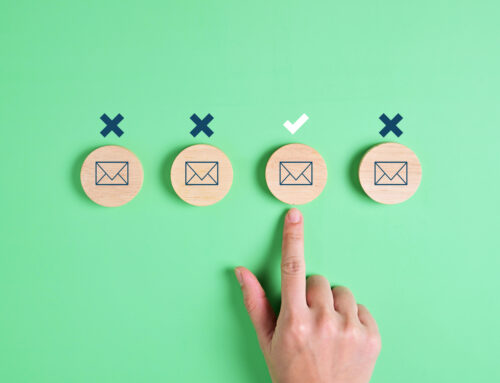 When I go to the Nonprofit Technology Conference, I try to attend sessions that will be helpful to our readers back home who couldn’t make it to the conference.
When I go to the Nonprofit Technology Conference, I try to attend sessions that will be helpful to our readers back home who couldn’t make it to the conference.
It’s pretty tough to choose which sessions though since there are always so many good ones going on at the same time.
Email is always a hot topic for you, so I decided to focus on that one day and I learned some great stuff!
Avoiding the 5 Most Common Mistakes in Responsive Email Design
First off, let’s talk about mobile. How do your emails look on different smartphones or tablets?
Don’t know?
Well, that could be a problem with more than half of recipients opening email on a mobile device.
That’s why I chose to attend Avoiding the 5 Most Common Mistakes in Responsive Email Design led by Blake Groves of Salsa Labs and Ira Horowitz of Cornershop Creative Thursday morning.
Here are the 5 most common mistakes:
1. Fixing What Isn’t Broken – Create a responsive template that works, then stick with it.
2. Using Bad Content – There is no substitute for good content. If your message doesn’t work, it won’t matter if your email is responsive.
3. Making the Email Too Long – Emails need to be skimmable and you should avoid long paragraphs.
4. Not Testing Images – Images can throw off a design especially if it’s too wide. And smaller images may be too hard to see.
5. Not Thinking It Through to the End – Your donation and landing pages need to also be responsive to create a cohesive experience.
The Science of Email Deliverability
Later that afternoon, I attended another informative session led by Harmony Eichsteadt of NationBuilder, Trung Nguyen of Salsa Labs, Laura Packard of PowerThru Consulting, and Brett Schenker of EveryAction – The Science of Email Deliverability.
What determines your email deliverability? Many factors and they are constantly changing, but here are a few:
- Content
- Spam software
- Blacklists
- IP reputation
- Domain reputation
- Traffic
- Speed of delivery
- Recipients themselves
You want people to open and read your emails, but how can you avoid spam filters? Start with these best practices:
1. Acquisition – Never buy lists or trick people into getting on your email list. Have subscribers confirm their email address with you after they are added. This is known as a “double opt-in.”
2. Engagement – Send only relevant messages which will require segmenting your list.
3. Metrics – Track open rates, click-through rates, and other meaningful metrics to see what’s working.
4. Quantity – Send fewer emails to those who have not been engaging with your email. These inactive recipients will throw off your open rates and damage your deliverability.
5. Opt-outs – You must have an unsubscribe link in your emails, and make sure they can unsubscribe easily (as opposed to making them log in to edit their subscriptions).
Download the slides for more on email deliverability and why it matters.
And if you are an NTEN member, you can watch the video recording from this session.





